Abstract
Mixed cultures of several Azospirillum and Rhizobium trifolii strains caused either an inhibition or stimulation of nodule formation on plant hosts as compared with nodulation of plants inoculated with R. trifolii alone. Azospirillum strains affected the nodulation process at a precise cell ratio (R. trifolii/Azospirillum cells) and time of inoculation. All Azospirillum strains used showed a variation in their ability to inhibit or enhance nodulation by R. trifolii strains. When nonviable cell preparations of Azospirillum strains were used for mixing experiments, no effect on nodulation was observed. A decrease in the effectiveness of normally Nod+ Fix+R. trifolii strains was observed when an Azospirillum strain caused an increase in nodule number.
Full text
PDF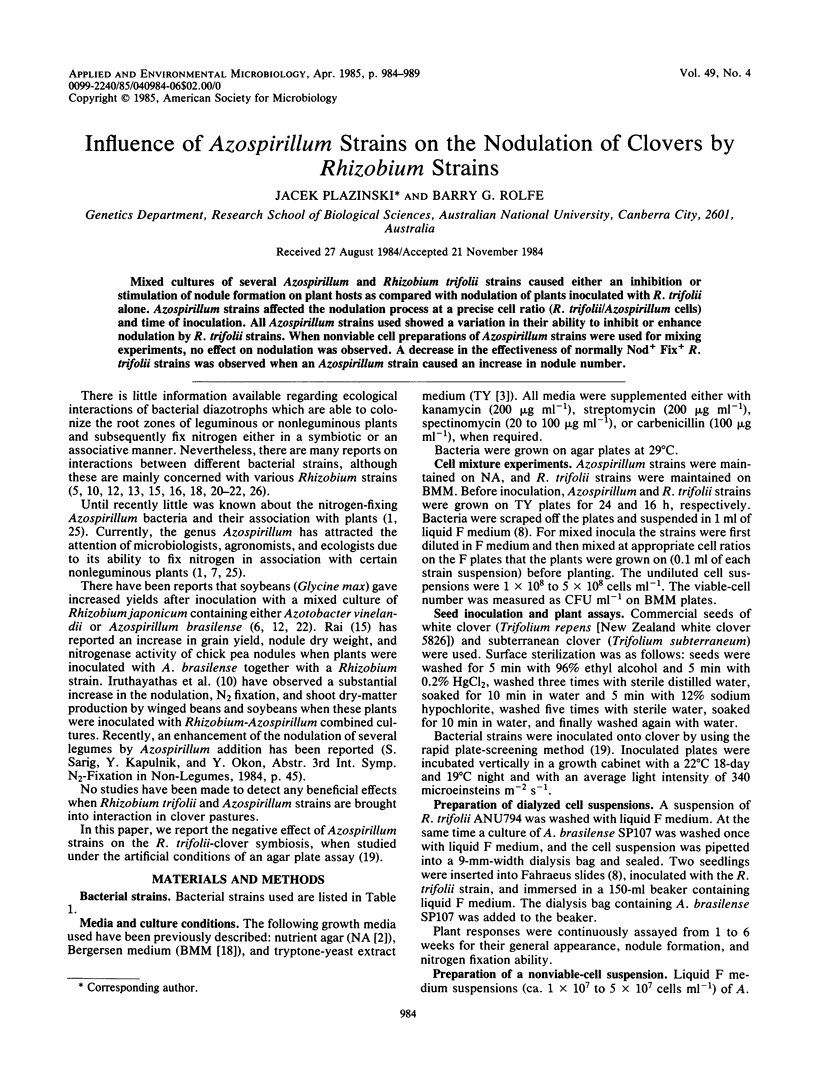
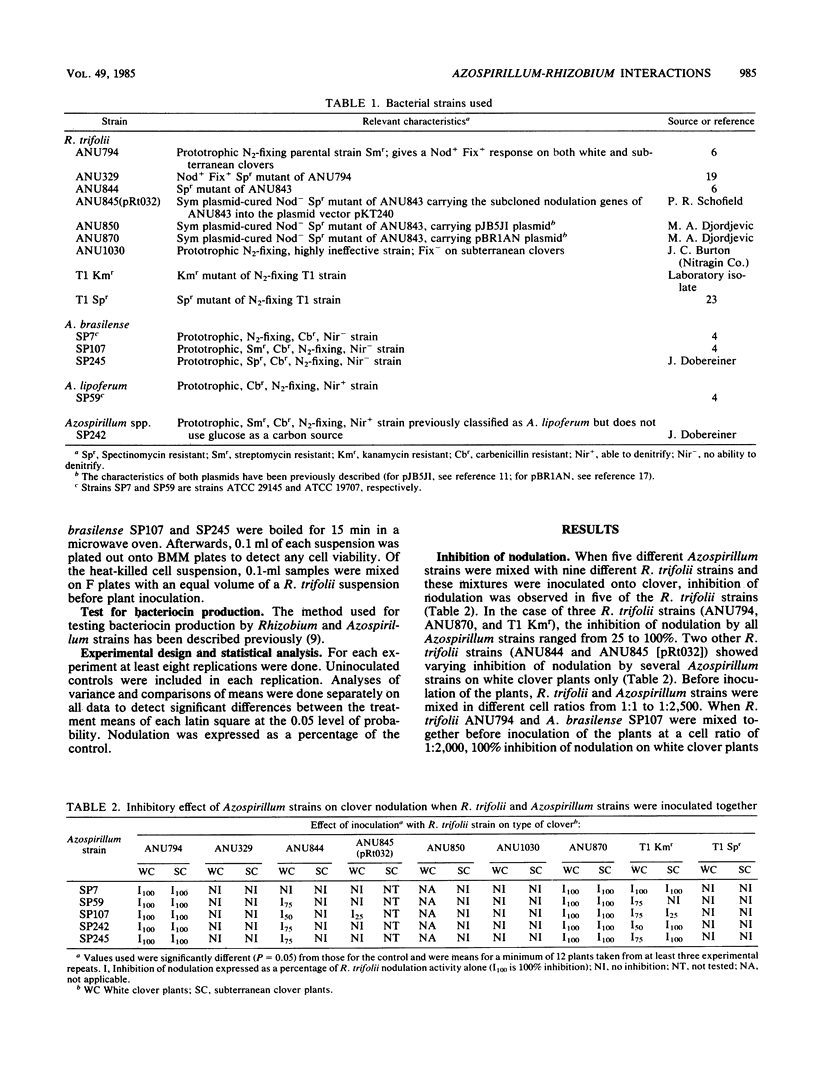
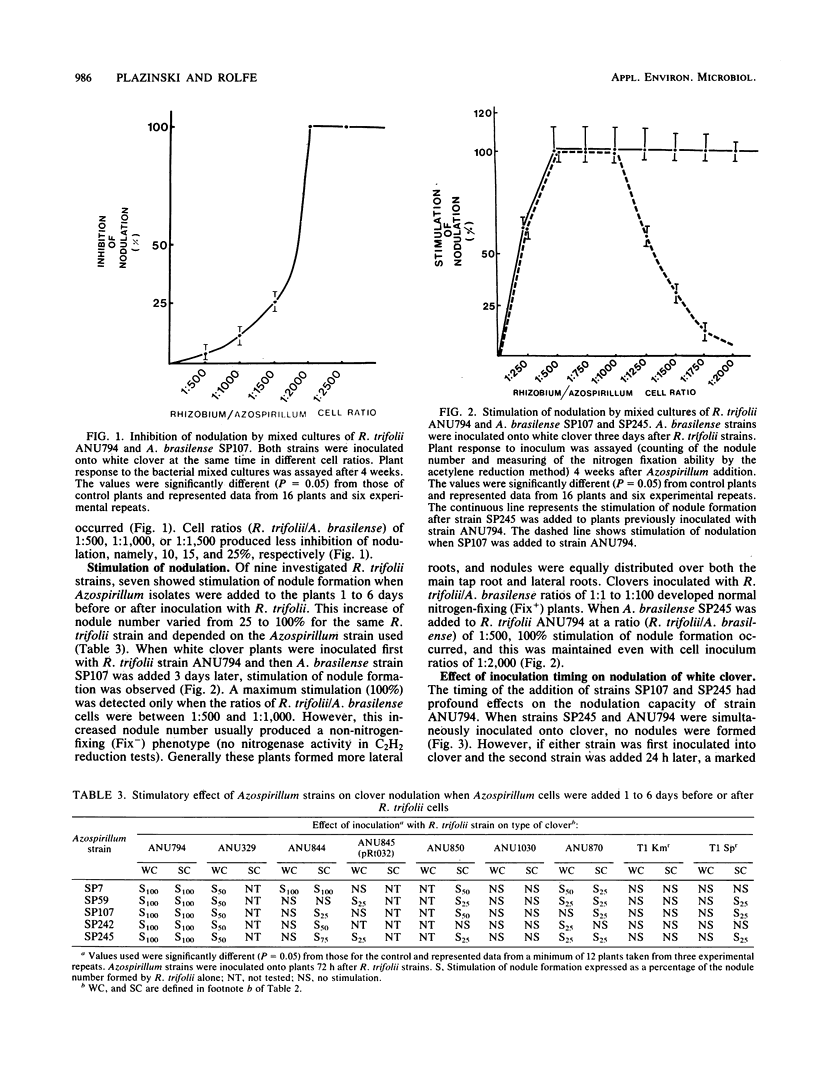
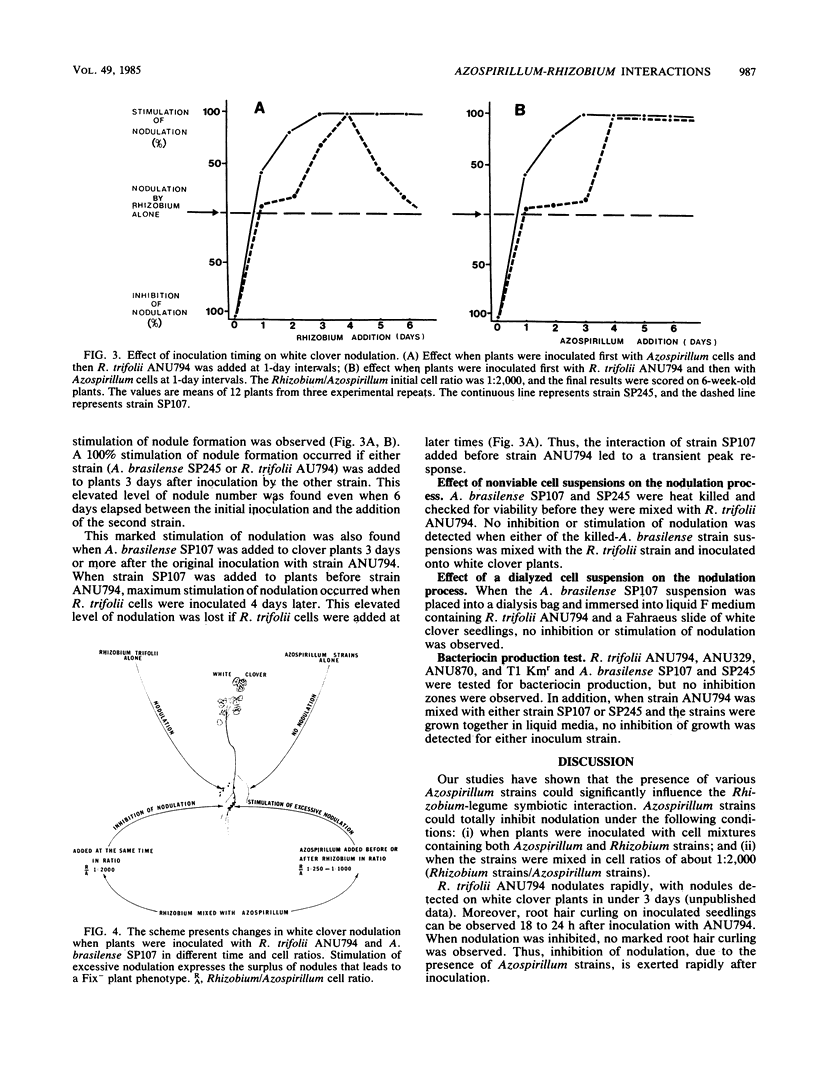
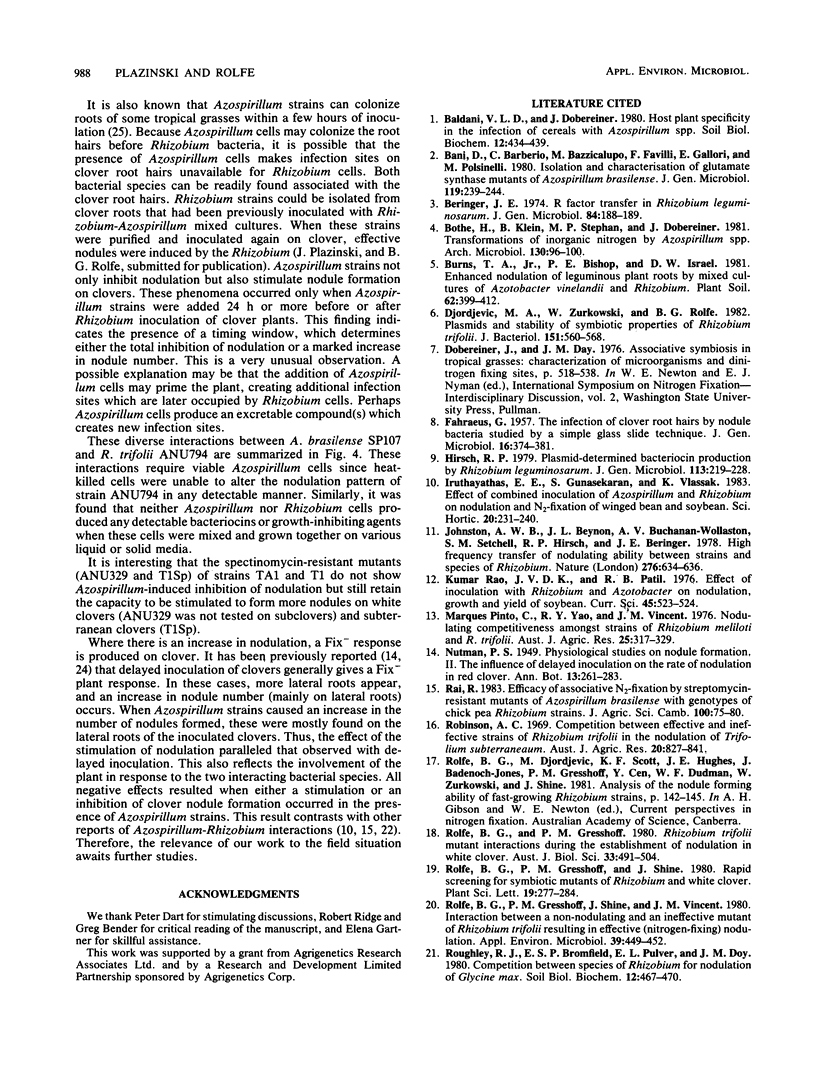

Selected References
These references are in PubMed. This may not be the complete list of references from this article.
- Beringer J. E. R factor transfer in Rhizobium leguminosarum. J Gen Microbiol. 1974 Sep;84(1):188–198. doi: 10.1099/00221287-84-1-188. [DOI] [PubMed] [Google Scholar]
- Djordjevic M. A., Zurkowski W., Rolfe B. G. Plasmids and stability of symbiotic properties of Rhizobium trifolii. J Bacteriol. 1982 Aug;151(2):560–568. doi: 10.1128/jb.151.2.560-568.1982. [DOI] [PMC free article] [PubMed] [Google Scholar]
- FAHRAEUS G. The infection of clover root hairs by nodule bacteria studied by a simple glass slide technique. J Gen Microbiol. 1957 Apr;16(2):374–381. doi: 10.1099/00221287-16-2-374. [DOI] [PubMed] [Google Scholar]
- Rolfe B. G., Gresshoff P. M., Shine J., Vincent J. M. Interaction Between a Non-Nodulating and an Ineffective Mutant of Rhizobium trifolli Resulting in Effective (Nitrogen-Fixing) Nodulation. Appl Environ Microbiol. 1980 Feb;39(2):449–452. doi: 10.1128/aem.39.2.449-452.1980. [DOI] [PMC free article] [PubMed] [Google Scholar]
- Skotnicki M. L., Rolfe B. G., Reporter M. Nitrogenase activity in pure cultures of spectinomycin-resistant fast and slow-growing Rhizobium. Biochem Biophys Res Commun. 1979 Feb 28;86(4):968–975. doi: 10.1016/0006-291x(79)90212-2. [DOI] [PubMed] [Google Scholar]
- VINCENT J. M., WATERS L. M. The influence of the host on competition amongst clover root-nodule bacteria. J Gen Microbiol. 1953 Dec;9(3):357–370. doi: 10.1099/00221287-9-3-357. [DOI] [PubMed] [Google Scholar]
- van Berkum P., Bohlool B. B. Evaluation of nitrogen fixation by bacteria in association with roots of tropical grasses. Microbiol Rev. 1980 Sep;44(3):491–517. doi: 10.1128/mr.44.3.491-517.1980. [DOI] [PMC free article] [PubMed] [Google Scholar]


